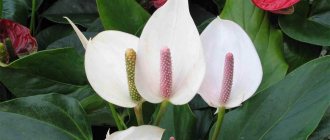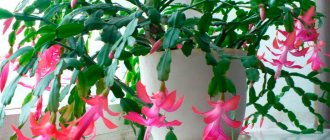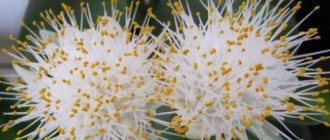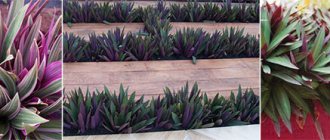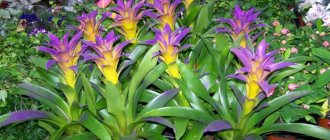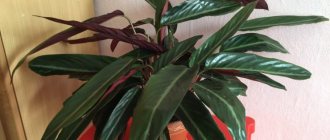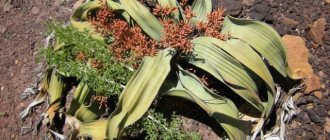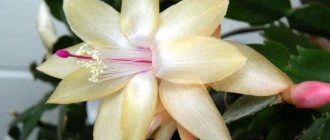Campsis - decorative vine
Surely those who have been to the south have paid attention to the decorative climbing plant with large orange flowers that look like gramophones.
But not everyone knows that it is called kampsis. In our country, this vine is distributed mainly on the Black Sea coast. Campsis is a perennial tree-like deciduous vine of the bignonium family, growing up to 15 meters in length. There are two species of this plant: Campsis radicans, native to North America, and Campsis grandiflora, from China. Large feathery leaves and bright funnel-shaped flowers make this plant decorative. It blooms profusely and for a long time: from June to September. Flowers, depending on the variety, are orange, yellow or red.
Campsis is a fast-growing, unpretentious plant. One of the important advantages of which is its smoke and gas resistance; the plant easily adapts to the conditions of a modern city. The only thing that holds back widespread use is the heat-loving nature of this vine. Campsis is able to withstand short-term temperature drops down to -20°, but in more severe winters it requires additional shelter.
Appearance of Brugmansia
Brugmansia comes from Latin America, where it is a spreading tree up to 5 m tall. In our latitudes, it often takes the form of a wide shrub with a horizontal crown. The stems quickly become woody and covered with smooth brown-green bark. On young branches there are rather large ovoid leaves. They have long petioles and are attached in pairs. The leathery leaf blade is dark green. Small light stripes can be seen along the central and lateral veins. The leaves are covered with short bluish pubescence.
The main asset of Brugmansia is its flowers. Flowering occurs in summer and is very abundant. Up to hundreds of flowers can bloom on one plant. Huge buds are located singly on thin peduncles, so they hang under the green branches. The open gramophone is 15-30 cm in length. The diameter of the wide part is about 17 cm. The color of the petals can be very diverse: white, cream, scarlet, yellow, blue. The flower can have a simple shape or double (with additional petals inside). Flowering is accompanied by the release of an intense, pleasant aroma. It is noteworthy that on hot sunny days the flowers close and open only in the evening twilight.
It is important to remember that all parts of Brugmansia are very poisonous. It must be protected from children and pets. The sap of the plant is very irritating to the skin, so all work is carried out with protective gloves. If during the flowering period the plant is in a closed room, it emits a very strong, intrusive odor. Many people report a deterioration in their health. If you cannot take the Brugmansia flower out into the fresh air, you need to ventilate the room more often.
Growing and care
In regions with a mild climate, Kampsis does not cause much trouble. This is a light-loving and heat-loving plant that requires a protected location. It can grow on any non-acidic soil, but prefers loose and well-fertilized soil.
Campsis can tolerate drought, but it needs to be watered regularly to bloom profusely. The plant responds well to nitrogen-phosphorus fertilizing, which promotes more luxuriant color and increases the duration of flowering.
Campsis grows quickly, so it needs regular pruning, which should be done annually, leaving only lignified perennial shoots intact. Pruning is best done in late winter or early spring.
Timely removal of faded flowers and pruning of faded shoots by two or three eyes will increase the duration of flowering, and the plant will look more attractive.
In regions with cold winters, Kampsis must be covered for the winter. To do this, the shoot is removed from the supports, straightened, laid on the ground and sprinkled with soil.
Campsis is a resistant plant and is rarely affected by diseases and pests, however, with prolonged heat and insufficient watering, it can be attacked by aphids, which can be combated with an alcohol solution of laundry soap.
Reproduction
Campsis is easily propagated by root shoots, layering, cuttings (both green and lignified), and seeds. To obtain a standard form, it can be grafted onto a catalpa.
The easiest way to propagate a plant is by planting root shoots, especially since they form in abundance around an adult plant. This should be done when the plant is dormant. The shoot is cut off with a piece of root and immediately planted in a permanent place.
Reproduction by layering is used when the shoots are located low above the ground. It is enough to simply fix such a shoot on the ground and ensure that it is constantly moist. It will take root over the summer. In the spring of next year, the cuttings must be separated from the mother plant and planted in a permanent place. Campsis propagated in this way grows very quickly.
Propagation by cuttings is also very effective. The cuttings are cut in June-July and planted in a shaded place in loose, fertile soil, which should then be mulched to avoid moisture loss. Lignified cuttings are cut in winter or early spring and planted obliquely. They can be immediately planted in a permanent place, since the survival rate of such cuttings is very high.
The seed method of propagation is rarely used and mainly in cases where vegetative propagation is difficult. Seeds are sown for seedlings in March in loose, well-moisture-retaining soil to a depth of about half a centimeter and watered as they dry. In the phase of 5-6 true leaves, the seedlings are planted in a permanent place.
What causes morning glory, pests
The main pests of Farbitis:
- Spider mite feeding on its juice. It is difficult to control because the shoots of this plant are very long, spreading over large areas, and are also densely leafy. You have to be extremely careful to notice the pest as soon as it appears. Regular inspection of the undersides of leaves will help. If the mite has already settled on the plant, apply acaricides - “Aktellik”, “Fitoverm”, “Marshal” in 3 passes. Moreover, 2 times - a week after the first, and another 5 days later, repeat the procedure for control.
Attention: aphids produce honeydew, on which sooty fungi settle, completely destroying the plant.
Campsis in vertical gardening
Fans and admirers of vertical gardening will certainly be interested in the amazingly beautiful ornamental garden vine Kampsis .
The genus Campsis from the family Bignoniaceae includes two species: Campsis rootosa, native to North America, and Campsis grandiflora, native to China. Both species are very spectacular climbing deciduous plants with large odd-pinnate leaves (up to 25 cm in length) and large scarlet or orange flowers of an original shape.
Campsis rooting is a large and powerful vine with many aerial roots on its stems, thanks to which it easily and naturally climbs supports to a height of up to 15 meters. Funnel-shaped tubular flowers with a bright orange corolla are gracefully bent at the edges, forming a scarlet frill. They reach a size of up to 8 cm in length and 5 cm in diameter, collected in apical clusters of 10-12 flowers.
The flowering of Kampsis, due to the sequential opening of flowers, is very abundant and long-lasting. Already from mid-summer, the dense foliage of this climbing plant is covered with eye-catching flashes of textured inflorescences.
Campsis grandiflora does not have aerial roots and climbs the support, clinging to it with the ends of the shoots. An adult plant successfully covers an area of up to 10 sq.m. Its flowers are much larger than those of its counterpart and reach 9 cm in diameter. The fiery orange color of the impressive bell-shaped inflorescences adorns the flowering vine from July until September.
Planting and care
Campsis is propagated by seeds, root cuttings and layering. Seeds are usually sown in autumn in greenhouses and greenhouses, and in the southern regions, stratified seeds are sown in open ground as early as April. During the first year, seedlings develop a powerful root system, growing up to 1 meter in height, after which they can be replanted.
The disadvantage of this method of propagation is that the plants begin to bloom only after 6-7 years, while root cuttings taken for propagation bloom already in the third year of the growing season. In the second or third spring, the cuttings are obligatory pruned, leaving 2-4 main shoots. Annual pruning forms the skeleton of the young plant, which is very important for this fast-growing vine.
Campsis is not too picky about soil conditions, but will not refuse loose, fertile and well-moistened soil in the sunniest corner of your garden. Caring for it consists of regular pruning of small root shoots, and in the spring, last year's shoots are removed.
Campsis is quite frost-resistant and can withstand temperatures down to -20°C. In areas with a more severe climate, the upper shoots of plants are removed from their supports for the winter, laid horizontally and covered with spruce branches.
Usage
Campsis is thermophilic; a warm, sunny wall of the house is ideal for it. The speed of its growth allows it to very quickly climb to the very roof, covering the walls of the building with an even carpet. For landscaping pergolas, gazebos and creating a spectacular hedge, it is better to use Campsis grandiflora.
This plant also grows well on a trellis and tolerates shearing well. With regular pruning it grows like a shrub, can be used as a border plant and is certainly great in standard form.
Partners
Campsis is inimitable as a tapeworm. Even in the absence of flowering, its foliage looks very decorative on the wall of the house, keeping heat and dust from entering the home.
Campsis - flowering deciduous vine
Campsis is a flowering deciduous vine with bright flowers that look like small trumpets from the first gramophones. Liana has become popular due to its lush decorative appearance and unassuming character.
This plant has amazing abilities to use supports; campsis can climb the wall of a house or any other structure to a height of more than 10 meters. The campsis is helped to climb up the supports by aerial sucker roots and wrapping around the ends of the shoots.
The beauty of the plant is given by large scarlet or orange flowers and spreading branches with large leaves. Campsis flowers are odorless, but contain a lot of nectar, which attracts a lot of flying insects and ants.
Campsis is a climbing perennial plant for which the ideal conditions are sun, warmth and absence of drafts. Campsis belongs to the genus of woody vines of the bignoniaceae family, therefore it is also called bignonia, and there is also another name - tekoma.
Despite its southern origin, Kampsis is liked by gardeners in the Middle Zone, who successfully grow it in their garden plots, enjoying flowering from June to September.
Surfinia
The effectiveness of this hanging plant, which is considered a petunia hybrid, amazes many gardeners. Long, powerful stems and abundant flowering are the distinctive characteristics of surfinia.
The color range is represented by a wide palette from white to purple. The flowers are bright and form a blooming ball. Today there are more than 20 varieties of surfinia.
Particularly popular:
- "Hot Pink";
- "Table White";
- "Yelou";
- "Giant Parple";
- "Surfinia Red".
Campsis - flowering deciduous vine
Choosing a landing site
Campsis is not too picky about the soil, but shows its best decorative properties in loose, fertile soil. The plant feels very good on the south side of the building; for example, the south side of the house is suitable for planting campsis, which gives additional warmth to the plant from the wall heated in the sun.
Considering that Kampsis produces a lot of root shoots, it is advisable to fence the place allocated to this plant with slate or sheet iron, digging them into the ground to a depth of 70 cm.
Planting Kampsis
A hole for planting a seedling needs to be dug about half a meter from the wall of the building and it is best to do this in advance, in the fall. The size of the hole should be approximately twice as large as the ball of soil of a seedling with a closed root system.
Seedlings are planted in the spring, in the second half of May, when all spring frosts have passed. The free space in the pit is filled with excavated soil mixed with organic and mineral fertilizers.
For drainage, sand or gravel should be poured into the bottom of the hole. The seedling in the hole is placed at an angle to the wall and tied to a trellis. Next, the plant is watered, and the tree trunk circle is mulched with compost or peat.
Reproduction of Kampsis
Bignonia can also be grown by seeds, which are planted in damp soil in March, constantly keeping the soil moist. The first shoots appear after 3 - 4 weeks, after which the box with seedlings is exposed to the sun.
At the end of May, when several leaves appear, the plant is transplanted into open ground or continued to be grown at home: in a room or on a balcony, adjusting the size of the plant by pruning.
The method of growing tecoma by seeds is not very popular, since the plant begins to bloom only after a few years (usually after 5 - 7 years).
The fastest and most effective way to propagate Kampsis is through rhizome shoots that grow around plants. The root shoots, together with the root, are separated from the main rhizome and planted in a permanent place.
Gloxinia - a wonderful gramophone
I want to tell you about my acquaintance with a beautiful plant called Gloxinia.
I have been interested in Gloxinias for a long time, but I was in no hurry to add them to my collection. I was frightened by the dormant period, during which it was necessary to “put the tubers to sleep” in a cool, dark place, and as you know, in an ordinary city apartment with central heating, such a place is not easy to find. And then, I was afraid to hide the tubers so much that I simply wouldn’t find them later. But, as they say, the devil is not so terrible... a few years ago I finally acquired an unrooted cutting of terry gloxinia, rooted it in ordinary boiled water and after some time I enjoyed flowering. I really liked these bells and I bought store-bought gloxinia seeds “Brocad Mix”, sowed them in the spring, and in early autumn I was already happy with the flowering. There weren’t many flowers, but it’s very nice to realize that I personally grew this beauty from tiny dusty seeds. Having read on the Internet that gloxinia can be provoked into two waves of flowering in one season, immediately after the first flowering, I cut off the top, leaving 2 pairs of leaves from the ground . Gloxinia sprouted a new shoot and flourished again. When the flowering plant began to dry out its leaves (late November), I realized that it was time to look for a place for the dormant period. I decided to equip a shoe box for this. I placed the tubers in ziplock bags, pouring a light substrate on the bottom, fastened the zipper, signed it, put it in a box , closed it with a lid and put it under the balcony door , where, at that time, it turned out to be the coolest place. In January, I opened this box and found that the gloxinia had already begun to wake up and sprouts had appeared on the tuber. They rested for 2 months. It's time to plant the tubers in pots. Before this, you need to inspect the tuber for rot; if something suspicious is found, you need to cut out this area with a clean blade, sprinkle it with coal and let it dry for 24 hours. If the tuber is healthy, then we simply remove the old roots and it is ready for planting. My nodules were surprisingly well preserved, no spots or dryness. We select pots. The ideal pot for planting gloxinia should be 5cm larger than the tuber. It is very undesirable to take a large pot, as there is a risk of flooding the plant, which will lead to rotting of the tuber. Do not compact the substrate too much; it should be light, loose and breathable; adding vermiculite would not be amiss . Be sure to put drainage at the bottom. When planting, the tuber should not be completely deepened; it should rise above the ground by a third . Over time, when the sprouts grow and become stronger, you will need to add more soil, covering the tuber completely .
You need to water the nodule carefully along the edges of the pot, trying not to get into the center. The water should be warm and settled, I leave it for at least 24 hours. Gloxinia does not like waterlogging, but you shouldn’t overdry the substrate either, this can affect the buds that have already appeared and they can dry out. I water gloxinia when the top layer dries, and check it with my finger before watering. A month after planting the tuber, gloxinia needs to begin to be fertilized. I use Kemira Lux fertilizer, a pinch per liter of warm water, every 10 days. I do not recommend spraying gloxinia; spots may appear on the pubescent leaves. At the moment there are a little more than 20 gloxinias of different colors in my collection. I tried to propagate them using different methods, it was very interesting and exciting. All acquaintances, friends and relatives have already been gifted with this wonderful flower. Lately I’ve been putting gloxinias to rest in the refrigerator (on the top shelf in the door), they are much more comfortable there, it seems to me.
Plant varieties
Such a funnel-shaped plant over time, throwing out its creeping shoots, forms a bushy appearance. There are enough varieties of bindweed to experiment with decorating your site, and there are enough colors to create the most unique design.
The two most important types: • Tricolor bindweed; • Moorish bindweed.
Most often, this plant is grown as an annual specimen. Since bindweed is very sensitive to frost, it can even be grown indoors. Its flowers begin to open as soon as the sun comes out, and at sunset they close.
Pansies
Most often, this plant is grown as a biennial. They bloom in the spring, the first year. Gardeners call them violets if the plant grew in the wild. It is low-growing, and the flowers are completely similar to violets, but much larger in size.
In the summer, pansies can be grown in large pots on the balcony of the house. The plant requires careful watering and bright lighting. Gardeners recommend using mineral fertilizers, which will also affect the color and brightness of flowers.
Application
As a rule, all varieties of bindweed prefer loose soil and a sunny location. And if you plant them next to suitable herbs, a rather pretty picture will form. Bright shades are best planted next to plain annual neighbors.
Landing places: • Rabatki; • Flower beds; • Hanging baskets; • Rock gardens; • Slopes.
This plant has a very compact shape, due to which it looks good in flower beds, as a frame, and ridges. With their help you can create amazing floral carpets. Moorish bindweed, with its trailing shoots, can be placed in hanging baskets that will look good on the tops of walls. This will create an amazing cascade of flowers.
Compositions of morning glory and plants combined with it in landscape design
If you plant a vine next to trees, it will use them as a support and entwine the trunk and branches. With the help of morning glory, they improve the microclimate in the house by shading windows facing south with its shoots. Trellis with farbitis will perfectly separate the recreation area from the vegetable garden and auxiliary buildings.
An annual vine will help out when you need to quickly and cheaply build a cozy gazebo or pergola - you just need to put a table, benches, supports around in the spring, plant morning glory, and low-growing annuals nearby. Farbitis planted around a dry tree will create a whimsical sculpture; it will look like a topiary. Ipomoea Kvamoklit looks beautiful in large vases and baskets. Sometimes walls are completely decorated with this plant, stunning flower pyramids and arches are created.
Decorate your garden with colorful bluebells. Look at photos of topiary and other elements of landscape design with morning glory, and show your creative imagination. This will add personality to your homestead and will give you something to be proud of.
Care and planting
To get strong bindweed seedlings, you can plant its seeds in a pot in early April, and plant them in open ground in May. You will need: • Pitchforks; • Sand; • Rake; • Compost; • Plant seeds.
Tricolor bindweed can be sown directly into open ground in early May. To do this, before planting, you first need to soak the seeds in water for one day.
At a depth of about twenty centimeters, the soil should be loosened with a pitchfork, and heavy soil should be fertilized with compost and sand. Smooth surface, remove large lumps and stones.
The seeds should be sown in a thin layer and lightly covered with soil, then water everything. Until the plants germinate, it is necessary to maintain regular soil moisture. When the seedlings reach a height of seven centimeters, thinning should be done with a distance of twenty centimeters, leaving only strong specimens.
